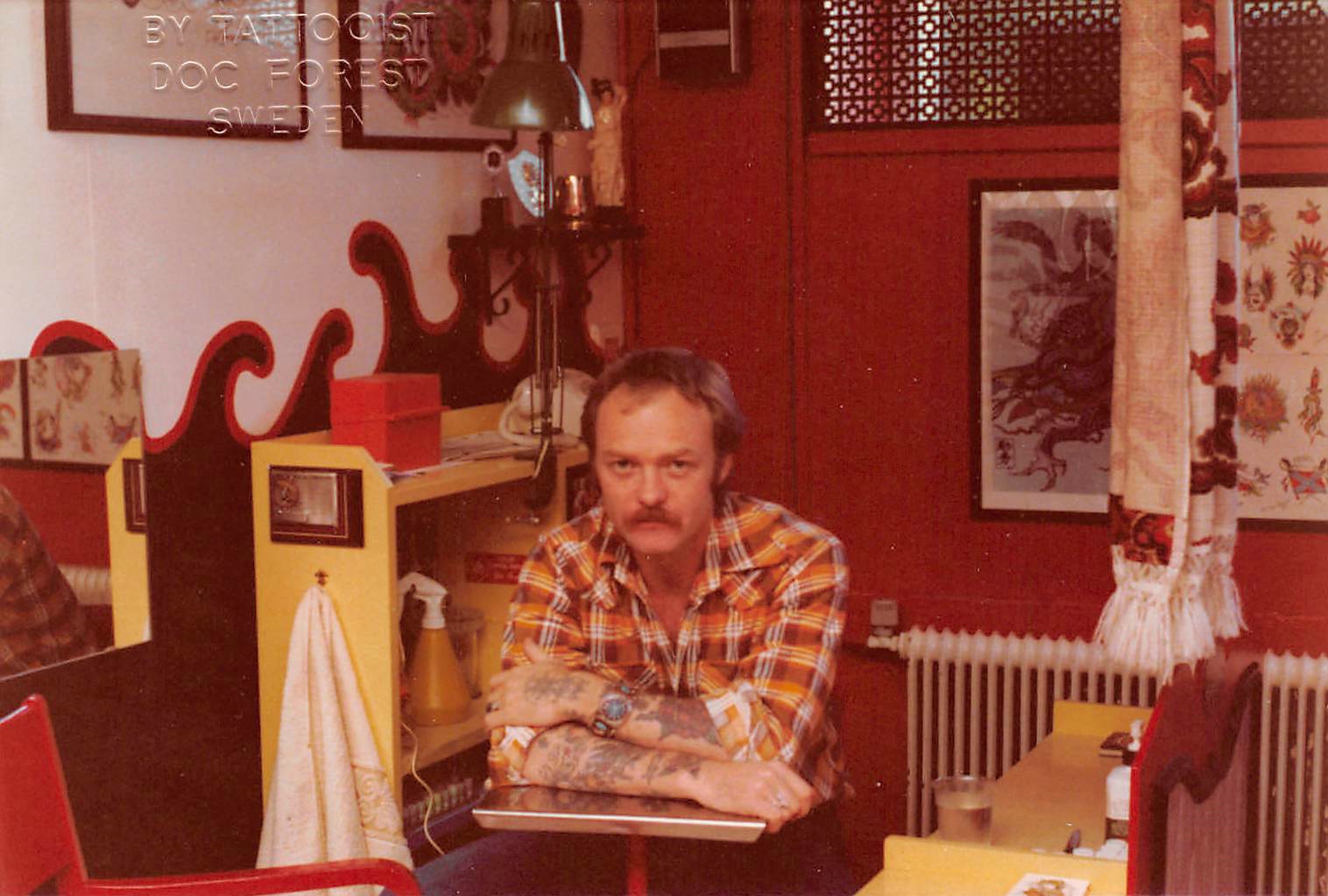Jan Ove Gunnar Skog, born July 7, 1944, was, as his family wrote in his obituary, a jack-of-all-trades. He is known in Sweden as a designer of everything from hot rods to guitars to tattoo machines, designer of clothing, but most of all as Sweden's greatest tattoo pioneer.In memory of him I have collected some things to give you a little insight into his eventful and colorful life.Manfred Kohrs, IDTG

When Ove Skog heard something about tattoos during his school years, he was immediately hooked and started tattooing himself and some classmates with sewing needles tied together and ink. In the spring of 1961, Skog signed on as a sailor and tattooing accompanied his travels. For several years, Skog hand-tattooed with three needles on a pencil handle. He happened to come across a tattoo artist in Sri Lanka who owned both a tattoo machine and several colors and was willing to pass along the address of a U.S. supplier, whereupon Skog was able to order his own professional equipment.

In 1968, Skog signed on as a sailor and soon met a Swedish tattoo fan named Alvar Blomqvist, who subsequently supported Skog. Skog, however, had difficulty developing freely as a tattoo artist. This was partly because the reputation of tattooing at the time was still very negative, even in Sweden, and partly because tattoo artists of the time guarded their professional secrets very closely. In 1971, they traveled together through Europe and visited several active tattoo artists who were acquaintances of Blomqvist. They also checked to see if there was an explicit ban on tattooing in Sweden - which there was not. However, such a plan had to be reviewed by the National Board of Health. After successful examination by the authorities, Skog opened the tattoo studio "Doc Forest" in Aspudden near Stockholm on May 5, 1972.

He took his stage name from an American tattoo artist who called himself Doc and Forest is a translation of his last name Skog. (swedish Skog = english Forrest) In 1973, Skog was invited to a tattoo exhibition in Tokyo along with ninety other international tattoo artists. However, Skog was the only one to accept the invitation, which earned him considerable respect among the Japanese. This was to become very significant for the young Swede in the aftermath, as Skog was able to take a larger quantity of Japanese designs back to Sweden. He also used them on a large scale as early as the 1970s, occasionally combining them with other styles.

In 1975, Skog also participated in the Tattoo-Treff in Hamburg, to which Theodor Vetter (Tattoo-Theo) had invited. In the following years, he was seen at almost every convention in Europe and the US. He stood out for his distinctive clothing, which he had designed himself. In the 1980s, interest and acceptance in tattoos grew in society. At the same time, the HIV virus was also making its way into Sweden. Skog, concerned about the reputation and hygiene of the industry, not to mention the health of his clients, contacted the National Board of Health and Welfare to develop professional regulations and controls for tattoo artists. Around 1986 -inspired by the Californian model- new regulations emerged in Sweden, which Skog played a significant role in shaping.


In 2014 Skog, then seventy years old, decided to decelerate his further life. Instead of tattooing full-time, he wanted to focus more on his hobbies, such as building hot rods, guitars and tattoo machines, and take it easy. Unfortunately, he experienced this phase only briefly. Ove Skog passed away on June 25, 2018 in his hometown. Tattoo pioneer Ove "Doc Forest" Skog has died after a long battle with cancer, his daughter Jessica confirmed to Aftonbladet Stockholm. However, the tattoo studio Doc Forest lives on in his spirit of tradition and quality through his son-in-law and former apprentice Valter.

Trivia Skog began trying to get the Swedish Crafts Council interested in a tattoo artist job description back in 1998. In 2018, the SRT, headed by Ove Skog, drew up a job description with a final journeyman's examination for tattooists. In November 2018, twelve masters and three journeymen in the tattoo profession were able to receive their master's and journeyman's certificates, respectively, at Stockholm City Hall -the first in the world. Ove Skog was awarded the master's certificate posthumously, as he died a few months earlier. R I P Doc Forest Text and Photographs Manfred Kohrs, Institute for German Tattoo History and Tattoo Collection Kohrs.




